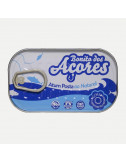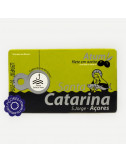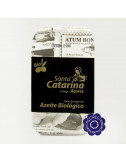
CENTRAL GROUP
TERCEIRA
[38° 43' N, 27° 12' O]
The Island is approximately 29km long and 18km wide, and its perimeter is 90km. It has an area of 402,2 km2 and registered a population of 55.833 habitantes (2011). Its highest peek is 1021 meters above sea level, and it is located in Serra de Santa Bárbara, on the west side of the Island.
The Island of Terceira is one of the five islands of the Central Group of the Azores. Initially it was named “Island of Our Lord Jesus Christ of the Thirds”, being the administrative centre of the “Third Islands” – as the Azores were known. The name “Third Islands” was applied to the whole of the archipelago because it was the third archipelago to be discovered in the Atlantic – the archipelago of the Canary Islands was called “First Islands” and the archipelago of Madeira was known as “Second Islands”. As time went by, this Island came to be known simply as Terceira.
Throughout its history, the Island of Terceira played a very important role in the establishment and maintenance of the Portuguese Empire, due to its geostrategic location in the middle of the North Atlantic.
The Island is crossed by the rift of Terceira, a geological structure associated to the triple junction between the Eurasian, African and American tectonic plates.
The naturals and inhabitants of Terceira are called “terceirenses”.
* * *
SÃO JORGE
[38° 37' 40" N, 28° 1' 2" W]
The Island of São Jorge is located in the centre of the Central Group of the archipelago of the Azores, separated from Pico Island by a 15 km strait – the São Jorge canal. The Island is 53 km long and 8 km wide, being its total area of 237,59 km², and a population of 8997 inhabitants (2011). Administratively, the Island is made up of the municipalities of Calheta (5 parishes) and Velas (6 parishes). It has 3 villages: Velas, Calheta and Topo.
The main particularity are the “fajãs” – mostly are inhabited but of difficult access. On the north coast, on should point out the Fajã do Ouvidor, Fajã da Caldeira de Cima, Fajã da Ribeira da Areia, Fajã dos Cubres and Fajã da Caldeira de Santo Cristo. On the south coast, the most importante are the Fajã dos Vimes and the Fajã de São João.
The naturals and inhabitants of São Jorge are called “jorgenses”.
* * *
PICO
[38° 28' 19" N, 28° 21' 50" W]
Pico is the second largest Island of the Archipelago of the Azores. It is 8,3km away from Faial and 15km away from São Jorge. It has an area of 447 km², a coastline that’s 151,84 km long, and a total of 31 islets, between big and small ones. The Island is 42km long and 20km wide.
The Island received its name from a majestic volcanic mountain, the Mountain of Pico, that culminates in a sharp peak – “Pico Pequeno” or “Piquito” (Small Peak). This is the highest mountain of Portugal and the third highest emerging from the Atlantic, reaching 2351 meters above sea level.
Administratively, the Island is made up of three municipalities: Lajes do Pico (6 parishes), Madalena (6 parishes) and São Roque do Pico (5 parishes).
The naturals or inhabitants of Pico are callhed “picoenses” ou “picarotos”.
* * *
GRACIOSA
[39° 05’ N, 28° 05’ W]
The Island of Graciosa is located on the extreme northwest side of the Central Group, 37km northeast of São Jorge and 60 km northwest of Terceira. It has an area of approximately 60,66 km² and a roughly oval shape, with a length of 12,5 km and a maximum width of 7,5 km. It is the least mountainous of the azorean islands, the highest point reaching only 405 meters, at the southern end of the Caldera. This low elevation gives the Island an oceanic tempered climate, which makes it the Island where it rains the least. Low rain means dryness, giving the Island a withish tone during summer time. This, and the white houses of the people of the Island earned Graciosa the epithet of “White Island”, given by the great portuguese author Raul Brandão in the book "As Ilhas Desconhecidas" (The Unknown Islands), in 1926.
It had 4 391 habitantes in 2011, mostly concentrated in the only municipality of the Island, the village of Santa Cruz da Graciosa, where the historical centre is a Classified Site, given the richness and balance of its architecture.
The island of Graciosa is considered a Biosphere Reserve recognised by UNESCO. +INFO
The natural and inhabitants of the Island of Graciosa are called “graciosenses”.
* * *
FAIAL
[38° 34' 37" N, 28° 42' 10" W]
The Island of Faial is located on the Western extreme of the Central Group of the Archipelago of the Azores, separated from the Island of Pico by a narrow strait with 8,3 kms distance, called “Canal do Faial” (Faial Cannal). The Island has an irregular pentagonal shape, with 21 km long in the direction east-west and 14 km (max.) wide, with a total area of 172,43 km². It has 15 063 inhabitants (2001), most of which in the city of Horta, where the azorean parliament is located, and the seat of the only municipality of the Island.
The harbour of Horta was an important depot for maritime and air (hidroplanes) connections, as well as with submarine cables in the North Atlantic. Horta has maintained its importance as a commercial port and port of call for yachts crossing the ocean between the American continent and Europe. The Island is locally called Blue Island, thanks to the literary descriptions of Portuguese writer Raul Brandão in its The Unkonwn Islands.
The natural and inhabitants of the Island of Faial are called “faialenses”.









